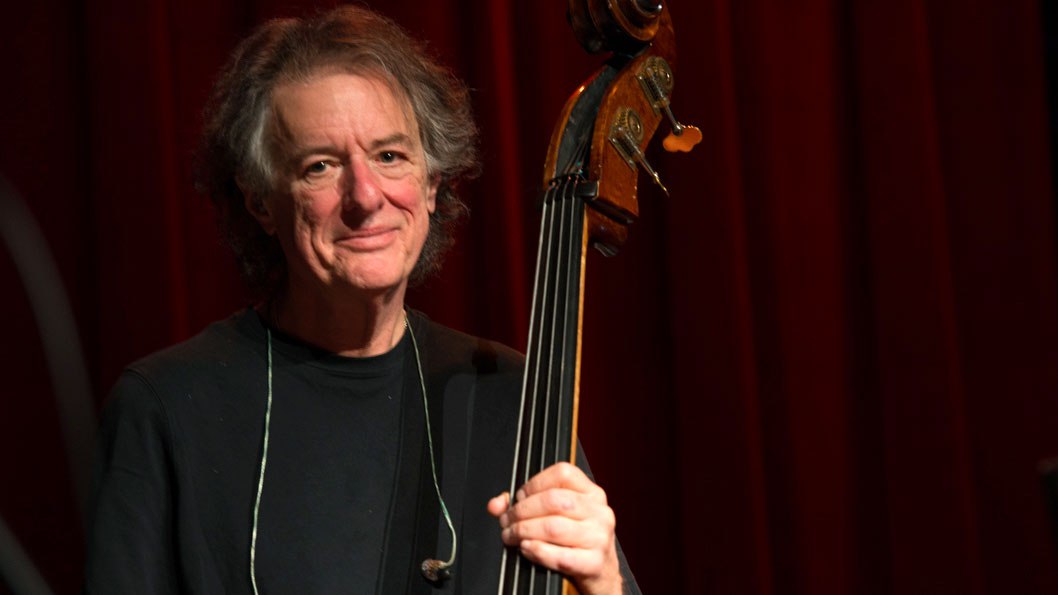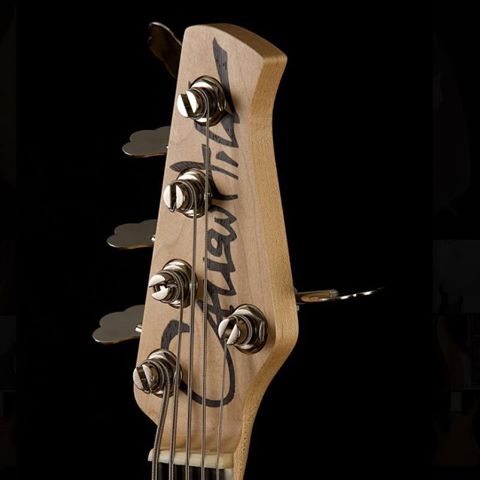In Memoriam: Remembering the Bassists We Lost in 2016
2016 was a hard year for losses in entertainment, and it was no different for the bass community. Too many legends and lesser-known heroes of the bass passed away this year, but their memories will live on through the music they made and the lives they touched.
Join us as we remember the lives and legacies of the bass players we lost this year.
Jimmy Bain (January 23, 2016)

Scottish-born bassist Jimmy Bain was a huge figure in the hard rock and metal scene of the ’80s as an original member of Dio. His first break was when he joined Ritchie Blackmore’s Rainbow in 1975. After two years he went on to form Wild Horses before hooking up with former Rainbow vocalist Ronnie James Dio in 1983. Bain recorded and co-wrote the band’s biggest hits “Rainbow in the Dark” and “Holy Diver”. He had more recently been playing with Dio alumni band Last in Line.
Bob Raymond (February 11, 2016)

Sugarloaf bassist Bob Raymond joined the band in 1968 when they were still called Chocolate Hair. He served in the band for all four of their studio albums including their smash hit “Green-Eyed Lady”. He was inducted into the Colorado Music Hall of Fame as a part of Sugarloaf in 2012.
James Jamerson, Jr. (March 24, 2016)

As the son of a legendary Motown bassist, James Jamerson, Jr. was born with a groove. He followed in his father’s footsteps and recorded his first song for Motown – Smokey Robinson’s “Flower Girl” – when he was just 14 years old. He went on to tour with The Temptations and his own band, Chanson, scored a hit with “Don’t Hold Back” in 1978. Jamerson worked with Bruce Springsteen, Bob Dylan, the Jackson Family, Luciano Pavarotti, and many more. He payed homage to his late father in the past few years on the Standing in the Shadows of Motown, LIVE! tour.
Joe Skyward (March 26, 2016)

Born Joe Howard, bassist Joe Skyward first got his break with Sky Cries Mary. He joined The Posies in 1994 and was featured on the albums Amazing Disgrace and Success. He later joined Sunny Day Real Estate, filling the shoes of Foo Fighters bassist Nate Mendel. He worked the rest of his life as a session musician.
Terry Plumeri (March 31, 2016)

Classical composer and bassist Johnterryl “Terry” Plumeri began studying music at just 10 years old. He attended the Manhattan School of Music in New York City and studied under Robert Brennand and Antal Doráti. He performed with the National Symphony Orchestra, but also was deeply devoted to jazz, working with Cannonball Adderley, Herbie Hancock, Wayne Shorter, Quincy Jones, and more. He eventually moved to Los Angeles to work in the movie industry and scored 57 feature films.
Jane Little (May 15, 2016)

Jane Little served as bassist for the Atlanta Symphony Orchestra for an astounding 71 years, which is listed as the longest tenure with a single orchestra in the Guinness Book of World Records. She collapsed on stage while performing the song “There’s No Business Like Show Business” with the orchestra.
Marshall “Rock” Jones (May 27, 2016)

Marshall “Rock” Jones was a member of the Ohio Players and recorded on the songs “Skin Tight”, “Fire”, and “Love Rollercoaster”. He was the last founding member of the group’s precursor band, The Ohio Untouchables. Jones was inducted with The Ohio Players into the inaugural class of the Official R&B Music Hall of Fame in Cleveland, Ohio.
Mike Chapman (June 13, 2016)

Mike Chapman was a Nashville session ace. Born in Alabama, he started his career playing nightclubs before trying his hand as a session player in legendary Muscle Shoals. He missed the city’s recording boom and instead moved to Nashville where he went on to work with the biggest names in country music. He is best known as bassist for Garth Brooks, as he worked on every Brooks album including the hits “I’ve Got Friends in Low Places”, “The Thunder Rolls”, and more. His career included over thirty #1 singles and over 160 million albums sold worldwide. Chapman was inducted into the Musicians Hall of Fame just weeks before his death.
Brian Rading (June 8, 2016)

Brian Rading co-founded the Canadian rock group Five Man Electrical Band in 1963. They signed to Capitol Records of Canada and had a breakthrough hit with “Signs”, which was gained further notoriety with a 1991 cover version by Tesla. Rading quit the band in 1973 but continued to play for the rest of his life and was a staple of the Ottawa music scene.
Rob Wasserman (June 29, 2016)

Rob Wasserman was an accomplished bassist and composer that worked with artists including Van Morrison, Oingo Boingo, David Grisman, Lou Reed, Elvis Costello, Bob Weir, and more. He released several albums of his own compositions as small groups with fellow artists. His Duets and Trios albums featured Bobby McFerrin, Rickie Lee Jones, Cheryl Bentyne, Lou Reed, Stéphane Grappelli, Jerry Garcia, Brian Wilson, Willie Dixon, Branford Marsalis, and Elvis Costello. He last album, Fall 1989: The Long Island Sound, was released in 2013.
Lewie Steinberg (July 21, 2016)

While many credit Donald “Duck” Dunn with the success of Booker T. and the M.G.’s, it was bassist Lewie Steinberg who recorded on their first two albums Green Onions and Soul Dressing. Steinberg co-wrote the iconic “Green Onions” and was with the band from 1962 to 1965. He was inducted into the Rock and Roll Hall of Fame in 1992, inducted into the Memphis Hall of Fame, and received a Grammy Lifetime Achievement Award.
Preston Hubbard (August 17, 2016)

Preston Hubbard was a prominent blues/rock bassist, playing for the Fabulous Thunderbirds. As a young man he joined Roomful of Blues, which was the first backing band for the Blues Brothers. In 1984, Jimmie Vaughn invited him to move to Austin, Texas and join the Fabulous Thunderbirds. The band made it big with the title track to their album Tuff Enuff. Hubbard also worked on Bonnie Raitt and Stevie Ray Vaughn. After the Fabulous Thunderbirds broke up, he became a mainstay in St. Louis.
Tim Cloonan (October 11, 2016)

CallowHill Guitars founder and luthier Tim Cloonan built incredible basses for some of the world’s greatest bassists. Cloonan founded CallowHill in 2004. His models are used by bassists including Tim Lefebvre, Dywane “Mononeon” Thomas, Owen Biddle, Derrick Hodge, Steve Jenkins, and more.
Bob Cranshaw (November 2, 2016)

Jazz legend Bob Cranshaw may be best known for his over five decades of work with saxophonist Sonny Rollins, but his contributions span just about every genre. In jazz, he played on the seminal Blue Note albums The Sidewinder by Lee Morgan, Inner Urge by Joe Henderson, Idle Moments by Grant Green, and many more, let alone working with artists ranging from Ella Fitzgerald to Thelonious Monk. He was an early adopter of the electric bass and used it to play as the session bassist for Sesame Street and the musical director for the Dick Cavett show. Cranshaw kept playing and spent his late years working in the New York City musicians union as an advocate for his fellow players.
Victor Bailey (November 11, 2016)

The son of a prominent R&B musician, Victor Bailey was introduced to the music of Philadelphia soul in his childhood. He started on drums but took to bass and studied at the Berklee College of Music, where he would later teach. He landed the gigs with Hugh Masekela and Miriam Makeba during which he met drummer Omar Hakim, who told Bailey that Weather Report was looking for a new bassist. He got the position following Jaco Pastorius’s departure and played with the band from 1982 to 1987 on four studio albums. After Weather Report broke up, he toured with pop megastar Madonna and released solo albums before taking the teaching position at Berklee.
Greg Lake (December 7, 2016)

Greg Lake was a pioneer of progressive rock as a founding member of King Crimson and Emerson, Lake, and Palmer. The bassist, who sang on the cult classic “21st Century Schizoid Man”, influenced countless bassists and singers with his unique songwriting talents. He played with King Crimson only for the debut album, In The Court of the Crimson King, before forming ELP with keyboardist Keith Emerson and drummer Carl Palmer. The trio reimagined rock with theatrical performances and extended musical experiments. After ELP’s breakup, he did solo work. His autobiography, Lucky Man, was released in 2012.



